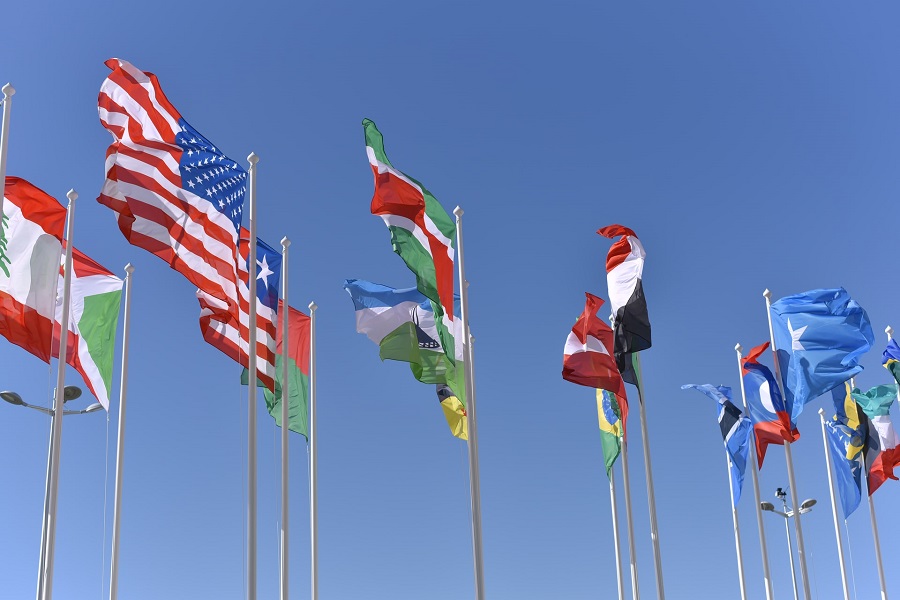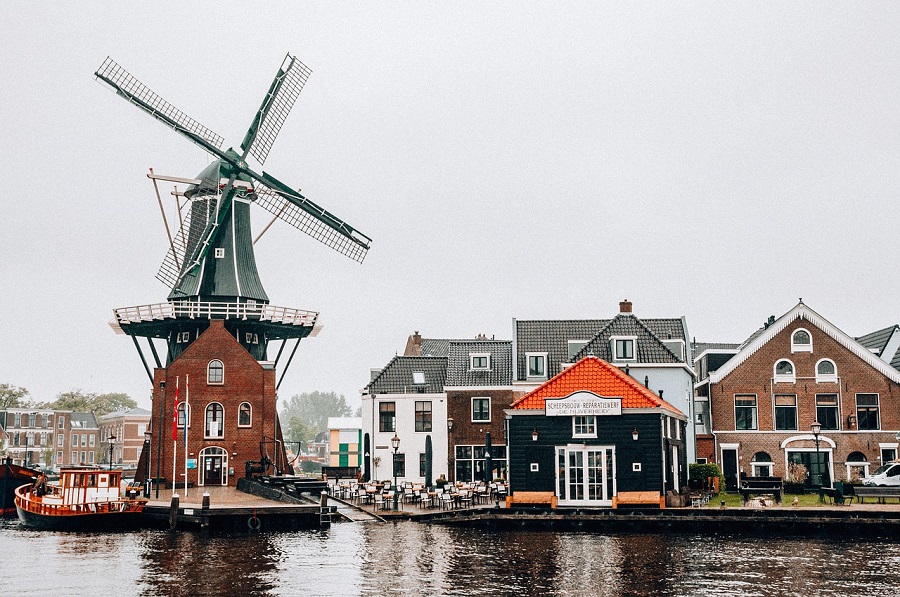When we hear the word brand, we immediately think of companies that market their products online, or on TV. However, brands are not solely related to products that are presented in some online stores or shopping malls. Branding can also come in the form of aerial representation. What does that mean you might ask?
Well, territories such as countries, regions, and cities can be put under the term brands as well.
And this is actually a quite important metric.
To put it in perspective, famous company brands such as Mercedes, Milka, Ikea, McDonald’s, Coca-Cola, are all creating a different image in people’s minds and are related to different human behaviors. All these companies have one thing in common. Their ultimate strategy is based on conveying a message that will attract more consumers and make them purchase that particular product. They strive to create a positive image in our minds.
Similarly, nation branding is trying to do just that. Let’s explain!
What is Nation Branding?
Nation branding is a process of finding the best treats of certain countries and using this data as a means of building a reputation on the global scene. Every country in the world possesses certain features that make it unique and accentuating these features is what will place the nation higher in terms of global awareness and reputation.
To be precise, we are not talking about flags, anthems, or insignias as symbols of one nation, which of course, are also used as recognition tools. Here, we are speaking about nation branding in terms of using marketing concepts and tools in order to enhance the position of a country internationally.

So, simply said, nation branding is the means of promotion of a certain country as a place that other people can travel to, invest in, and build a quality product base that will additionally nurture talent.
In that manner, this type of branding helps countries to set some boundaries in the world and rise to differ from other countries. In addition, a nation brand can also help the corporate world with its product placement as it opens the door to location branding.
Location branding is used by businesses in order to build emotional and visual links with particular locations so they can easily place their products or services.
The premise behind both types of branding is that cities, countries, and regions elicit strong attachments that are extremely efficient when it comes to expressing aspects and perceptive thoughts about that particular location.
That is why we see certain countries are closely tied we certain attributes which can be both used as an incentive by the countries or domestic corporate entities for marketing.
Japan is pretty much famous for its efficient policies, while Italy is closely related to the fashion industry. Switzerland on the other hand is a relentless leader when it comes to financial security but is also famous for its chocolate and cheese. All of these aspects and features have been widely used by these countries as well as corporate entities as tools for conveying their messages to the world.
Why Nation Branding is Important?
Many countries want to enter the game of nation branding due to the fact that their improvement in this field would mean overall benefits for the whole nation. In fact, there are several fields in which countries can act so that they can dramatically change the course of their economic development.
Segments such as tourism, foreign direct investments, export, workforce, and culture are some of the most used sections that can boost the reputation of a particular country.
Tourism
Tourism is one of the most used tools for creating the brand identity of a country. Marketing campaigns are taking what is most impressive in certain land and placing it on the global scene in order to create a certain image in people’s minds.

Even if the place was previously unknown, if marketed with the right amount of positive vibes, it will create a positive response. The audience that will be reached with this campaign will soon have an image for this destination and every time the name of the country, region, or city is mentioned, their brains will immediately connect it with the information stored from those marketing campaigns. The ultimate goal is to spark interest in the targeted audience about that particular place and create a strong desire for visiting that will influence the overall decision-making process for traveling.
Foreign Direct Investments
On the other hand, tourism is not the only tool for constituting a nation’s brand. In fact, investing opportunities are a great tool for getting a country noticeable. Of course, all of this is directly related to the country’s market policies in the segments such as bonds, real estate, or currency. That is why countries nowadays are trying to attract different types of investors with nurturing certain values in the segments such as these. In essence, countries are trying to get a better score in fields such as:
- Transparency (this is a value that is measured with CPI or Corruption Perceptions Index and gives a country a rating on how it handles corruption activities within)
- Economic growth (a metric that shows how a certain country is place in the economy segment and whether there is a potential for growth)
By exploring these many companies, individuals, and other businesses can tailor up a strategy for entering a country and invest a certain amount of capital there. This in turn will be prosperous for both sides and will have a beneficial effect in the long run.
Exports
Exports are also one of the founding tools of nation branding and practically they might be the trademark of countries. Countries drive the economy by manufacturing, producing, trading, and/or in many other ways. Due to favorable climate conditions, many countries can offer quality products of some type that other countries cannot. For example, the three biggest exporters of wine in 2021, were France, Italy, and Spain. This comes as no surprise knowing that France has one of the best world-renowned wines. On the other hand, Germany’s main export product for 2021 was vehicles and car parts which accounted for 15.2% of the overall country’s exports. For the US, the biggest export was aircraft parts which were estimated at $9.22 billion.
All these statistics show us that different nations and countries have different fields that are more developed and are constantly working towards improvement. That is why, many of them are already known for these products and whenever a product or service is mentioned, it immediately relates to these countries. So, we have French wines, German cars, Swiss cheese, Italian pasta, etc.
Workforce
The workforce metric shows the overall working potential of the people in certain countries. This is also closely related to foreign direct investment, as many foreign companies might make a decision to invest in one country due to the workforce market conditions that they find more suitable for their business.

This is mostly true because of the various living standards in different countries. Certain businesses tend to move their operations and production capacities overseas due to the lower costs in these countries. This, however, does not mean that the workforce in these countries is underpaid, but it simply means that the country in question has different living standards.
This means that the same salary can buy you different things if applied to countries that have different standards of living. For example, a monthly wage of $1000 might be considered low in countries such as Norway, Switzerland, the United Kingdom, or the Netherlands, but the same wage will be considered very high in countries such as Iran, Algeria, Egypt, Peru, etc.
This indicator can be used as a great narrative for attracting more businesses in countries with lower wage standards. As a result, these businesses can be a critical factor in the future development of the country. Although the companies’ main purpose of relocation is to reduce costs for operations, in time, they will improve the economic landscape in the host country and enhance the development process.
Culture
Lastly, one of the most compelling things a nation has to offer is its culture. In fact, culture is one of the strongest tools for the promotion of a country, a city, or even a region. But what is considered as country’s culture? It is simple. Architecture, music, lifestyle, food, traditions are all intertwined to form one country’s culture.

Of course, culture can be a thing that differentiates whole regions, but here we are speaking of culture at the national level. It is fair to say that all nations are constructs, but as time has passed these constructs have started their own ways of performing certain activities. All these approaches have started to form different cultural bubbles that displayed specific behaviors.
In the end, nation branding is seen as the embodiment of the identity of the people that belong in this national bubbles. And what better describes the identity of people, than the cultural aspects, characteristics, and stereotypes.
To Sum Up
Overall, nation branding is a very underestimated tactic of getting a country promoted on a global scale. The nation brand might largely impact the economic growth of a country and influence the gross domestic product.
But in order to promote and improve the overall country’s reputation, good management is more than necessary. It is the same as managing a positive product brand in a certain company.
Eventually, a well-developed strategy for nation branding can create a strong and positive country brand, which means a great and prosperous outcome for the country’s future and the future of its residents.


